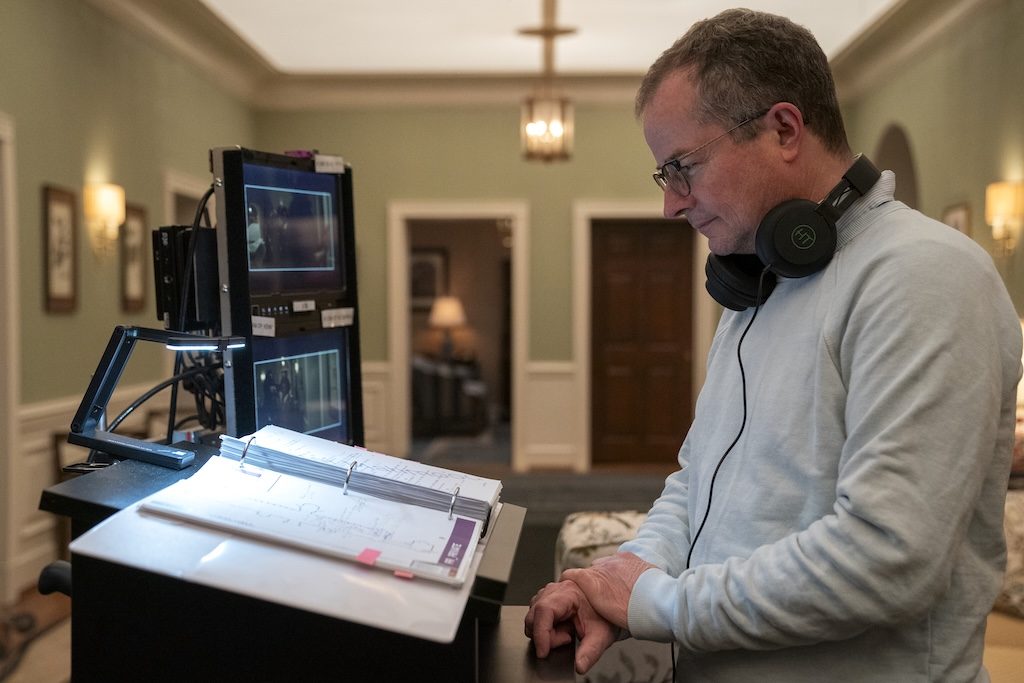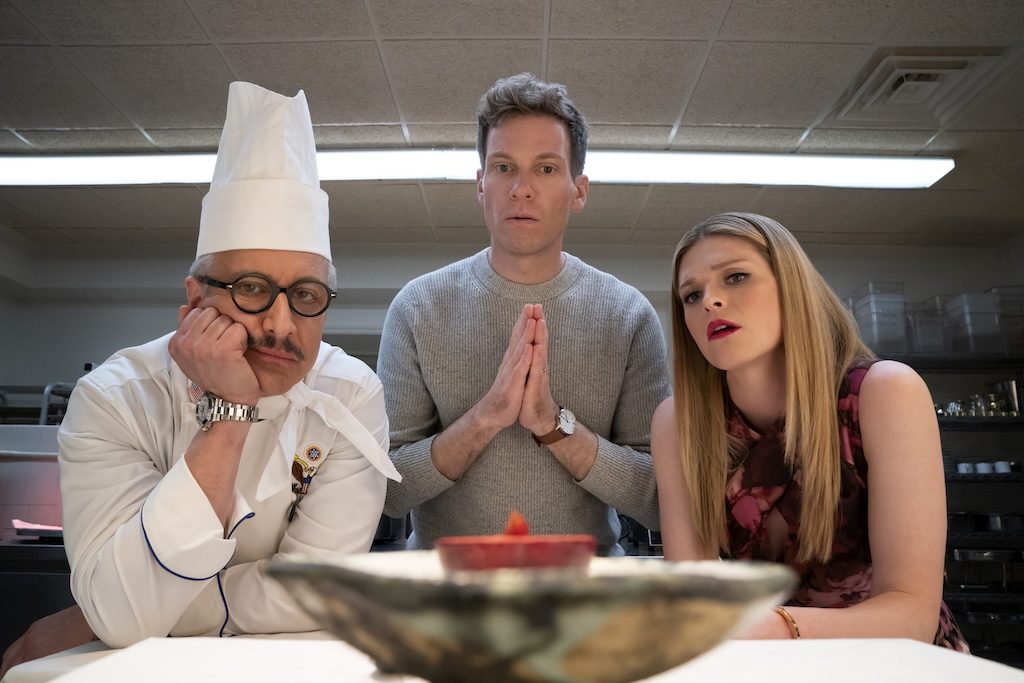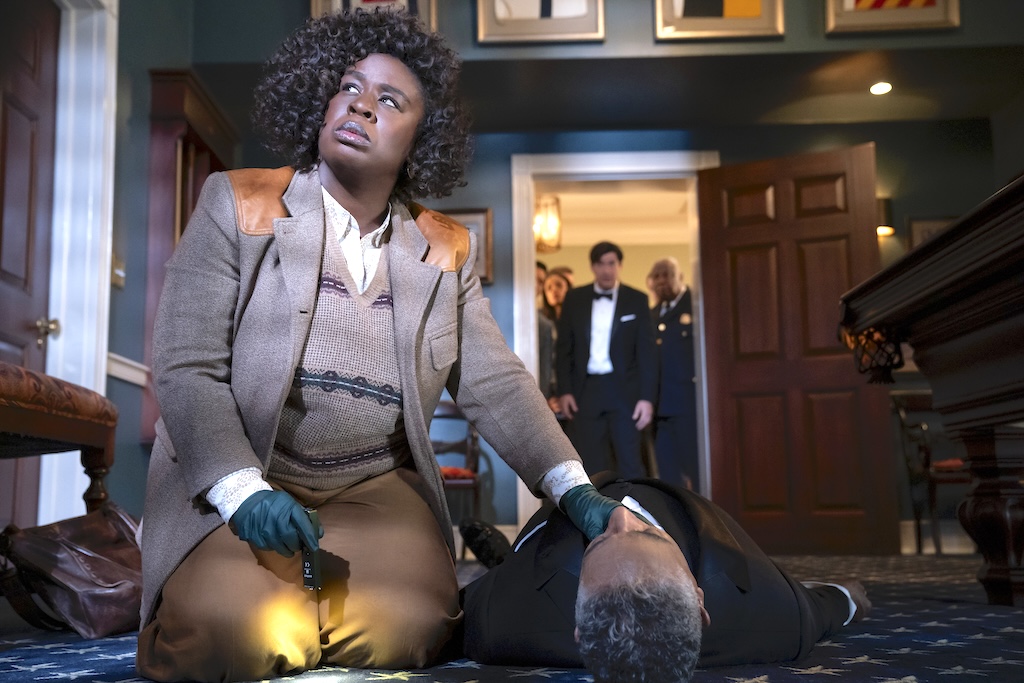If Agatha Christie and Sherlock Holmes co-adopted a child – it might look like The Residence – a calm, absurdist, conspiracy political thriller whodunnit. Set in the White House and tracking the First Family, Paul William Davies (Scandal, For The People) spins a convoluted web starring the world’s greatest detective and avid bird watcher Cordelia Cupp (Uzo Aduba) who’s abruptly yanked from Papua New Guinea to 1600 Penn Ave to solve a murder. The White House is locked down as the eccentric Cordelia rolls up her sleeves and gets to some serious sleuthing.
132 rooms. 157 suspects. 1 dead body. 1 disastrous State Dinner and Aussie Pop Princess Kylie Minogue. Where to begin? Everyone’s a suspect.
The Residence pays homage to a number of inspirations. “One of them was the old school murder mysteries from the 70s with an all-star cast such as Death On The Nile, Murder On The Orient Express, and, The Last Of Sheila. There are also influences from later such as Clue and Knives Out,” explains Davies.
Containing The Comedy
The writer is also attracted to the “farcical comedic side” and ‘behind the scenes’ “Noises Off…, Fawlty Towers” and “Upstairs Downstairs” aspects to The Residence, which he likens to the actual machinations of the White House.
The Residence is a murder mystery with a farcical theatrical element to it
Amid the zaniness, Davies steeps The Residence with a political conspiracy. He looked to films including The Parallax View and Three Days Of The Condor for enlightenment. “You’ve got this congressional hearing and somebody’s obsessed with this conspiracy theory about what had happened.”

Paul William Davies. Photo courtesy of Netflix
With so many moving parts in constant motion, The Residence is a masterclass in intricate storytelling. “I’m doing a lot of things with timeframes and different locations and storytellers. I’m servicing a lot of storytelling architecture. There is a precision and rigor to the storytelling of a good murder mystery,” says Davies of his writing process.
Paul William Davies planned every story component very early on to ensure the witty humor was contained and organic, rather than allowing the story to culminate into an uproarious set piece gag. “If you’re writing a whodunnit, this is integral to the to the vertebrae of the story.”
The location also lends itself to the plot. The White House is a very familiar place with many secret rooms, nooks, and crannies.
Turning A Novel & A C-Span Whitewater Congressional Hearing Into The Residence
Paul William Davies adapted Kate Anderson Brower’s novel of the same name into his TV series. He extracted the more procedural components of the congressional hearings from her book, but added his unique comedic flavor to the TV series.
“The book was more interviews. There’s no murder mystery, no big state dinner or Cordelia Cupp. The book is a history of the staff and the relationships between the and the administrations.”
There was additional impetus to The Residence. “I was watching this C-span testimony one night from the 1990s where the then Chief Usher was testifying about the Whitewater investigation during the Clinton administration and about the staff having possibly moved boxes around on the third floor of the White House. There was a schematic and drawing and he was narrating it,” mentions Davies.

The Residence. Kylie Minogue as Self in episode 102 of The Residence. Photo by Erin Simkin/ Netflix
“They were talking about the library, the game room, the music room, this storage room, the solarium and the doors between them. As I was listening to this, I thought, ‘It’s like a clue board.'” The writer was inspired. He could merge the staff stories, the funny things, the romances, and the drama in the White House. Davies utilized his poetic license to embellish and fictualize these characters and stories to become something quite different and entertaining.
Davies wrote all the episodes ensuring that each episode was structurally and tonally consistent. Shondaland and Netflix gave him substantial leeway with few notes.
Paul William Davies really enjoyed writing Cordelia’s character because the entire mystery hinges on her. “She’s the through line to the whole thing.”
Writing Process – It Begins With A Solid Outline
Prior to tackling the outline, Paul William Davies wrote story ideas on big sketch pads and put notes in word documents. He didn’t use structured outlines until later in the creative process.
The season outline was around 15 – 20 pages long which focussed more on the principal suspects. The outline for each espisode was about 2 -3 pages.
“In terms of the murder, he asked, ‘How could I do this in the most unexpected, but also believable way?'” Curiously, he wasn’t overly focused on a motive early on because they can come from anywhere at any time and grafted onto the story. “I wanted it to feel like it was organic to this environment and these people.”

Didier Gotthard (Bronson Pinchot), Elliot Morgan (Barrett Foa) & Lilly Schumacher (Molly Griggs) Photo by Jessica Brooks/ Netflix
With so many complex tasks to juggle, the writer heavily-outlined every episode. “I’m not a big outliner in general. I have a bit of an idea of where things are going, but kind of find them along the way. That’ll never work for this. It’s just too complicated. I need to know where I’m going from the start.”
He wrote a series bible before he started on the plotting. It was around 75 pages long. “I went through the relationships of all the characters. I figured out the state dinner, who was there, why they were having a state dinner, and what the state of Australia-US relations were,” he elaborates.
“I figured out why they were having the congressional hearings and how long they lasted. I outlined the whole season’s episodes, and figured out how they were going to all end. And most importantly, who the victim and the killer were.” He wrote a 15-18 page “suspects file” in a separate document. He considered “who is the person that naturally can create the most viable suspects around them.”
Once the entire flow of the crime was figured out in his rigid outline, he wrote all the episodes in order. He stuck really close to that outline to expedite the process.
“You learn a lot about different people in each episode. And I wanted to honor the history of this house, both the people that work there, but also the people that have lived there, those relationships and the life of the house,” the writer concludes.
